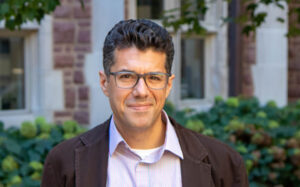Memory is as much about the future as it is the past.
Whether experiencing something new, or something we’ve experienced a hundred times, people use memories of the past to navigate subsequent encounters. Traditionally, psychologists believed that the more ingrained a memory of something was, the more difficult it would be to update your understanding of that thing, should it change.
New research from Washington University in St. Louis finds, however, the opposite is true. In a paper published Nov. 20 in PNAS, Jeffrey Zacks, professor and associate chair of the Department of Psychological & Brain Sciences in Arts & Sciences and professor of radiology in the School of Medicine, found the stronger a memory is first encoded, the easier it is for a person to notice subsequent changes and to integrate them into their updated understanding.

“The bigger the discrepancy is between a previous memory and what happens the next time,” Zacks said, “the stronger the signal is that you need to update your memory representation.”
Results of the study also suggested that in older adults, a weaker ability to discern that one event differs from a previous memory may be partially responsible for a decline in memory function.
In the experiment, two groups of participants were tested — younger adults, ages 18-27, and older adults, ages 65-84. Over two days, participants had their brains scanned using MRI while they watched and answered questions about movies that represented a day in an actor’s life.
Some of the activities changed from day to day. For example, on Day One, the actor might unroll a yoga mat and do some stretches. On Day Two, the movie might begin the same; the actor might pull out a yoga mat. Then, however, they could do one of two things: either the same stretch routine or abdominal crunches.
